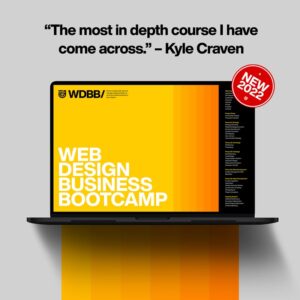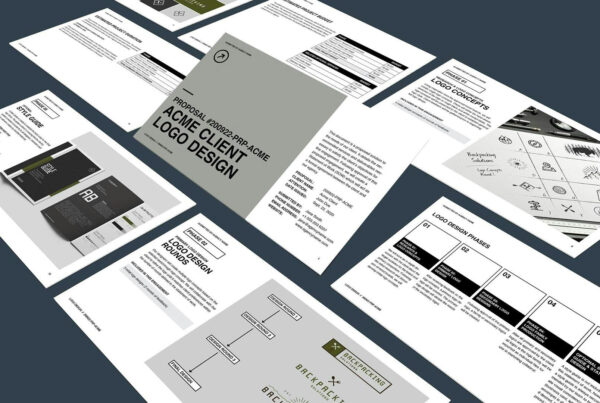After I sold my agency in 2015, I stayed working for the acquiring agency for a couple years during my buyout timeline. We were doing close to eight figures per year with a wide variety of client engagements; lots of fixed bid, tons of revenue from dedicated resources, retainers, maintenance plans, pay-per-performance and of course, some hourly based contracts. (If you aren’t familiar with all of these billing strategies, check out The Ultimate Freelance Course where I go in-depth on them and I share my agency contracts too.)
We had a client with a complex and undefinable business challenge which is one of those rare circumstances where an “hourly” based engagement makes sense. I worked with our full-time proposal/contract writer to craft the scope of an agreement with the client. (BTW- “Ya” it was really nice having a full-time person who was completely dedicated to writing our proposals and SOW’s.)
The client wanted some discounts for sending us a large volume of work (as they should) but we wanted to make as much revenue off of them as we could (while still offering incentive to book more time with our team). What I landed on were three different ways to handle “hourly” based engagements. Below you’ll find those three options and some example hourly rates and how they may calculate for a sample client.
 Option 01: Pay-As-You-Go Hourly
Option 01: Pay-As-You-Go Hourly
Description: You do work for the client as requested. You invoice them for the hours used in an agreed upon interval (usually weekly or monthly).
Who to Sell This To: Any client who does not want to sign a longterm contract or commit to a large quantity of hours.
Term: No contract length, although the client still needs to sign an agreement.
Hourly Rate:
- $130/hour (this is an example hourly rate and will be used as our baseline for the other calculations)
Benefit to the Client: No commitment to a large number of hours.
Benefit to the Agency: Client is paying your highest hourly rate.
Option 02: Prepaid Bucket of Hours
Description: The client pays for a block of hours in advance. You provide the client with a discounted rate based on the number of hours they pre-purchase. The more hours they buy, the lower the rate per hour.
Who to Sell This To: Any client who wants a large volume of your time to work on a variety of projects that cannot be defined at this moment.
Term: The bucket of hours purchased should have an expiration date (usually 12 months).
Hourly Rates:
- Bucket of 100 hours = $130/hour (your full hourly rate)
- Bucket of 200 hours = $126/hour
- Bucket of 300 hours = $122/hour
- Bucket of 400+ hours = $118/hour
Benefit to the Client: Client receives a discounted rate for paying upfront.
Benefit to the Agency: Agency gets money up front and guaranteed work.
Option 03: Cascading Hourly Rate
Description: You provide a discounted rate for your clients AFTER they use a certain quantity of hours.
Who to Sell This To: A client who wants you to discount your rate due to a large volume of work coming, but they don’t want to “pre-pay” for the hours (as with a bucket of hours).
Term: The rate resets back to your full rate after 12 months.
Hourly Rates:
- 1–99 hours = $130/hour (your full hourly rate, client pays this rate for the first 99 hours)
- 100–249 hours = $126/hour (after 99 hours the first discount kicks in and they begin paying $126/hour)
- 250–399 hours = $122/hour (after 249 hours the next discount kicks in and they begin paying $122/hour)
- 400+ hours = $118/hour (after 399 hours the final discount kicks in and they begin paying $118/hour)
Benefit to the Client: They receive a discounted rate without paying up front.
Benefit to the Agency: Agency gets a more firm guarantee of work from the client but does not reduce the rate as much as with a prepaid bucket of hours.
Now you may be thinking, “What is with the cascading hourly rate? How would that even work?” Let’s run through a couple scenarios to clear it up.
Example Client Who Needs 563 Hours of Work
Let’s say you have a client who needs 563 hours of work from your agency. Below you’ll find the various ways the different hourly rates breakdown.
Example 01: Pay-As-You-Go Hourly
The client pays the full rate for all of the hours.
563 x $130 = $73,190
Total Amount Client Will Pay for 563 Hours = $73,190
(9.2% more expensive than Prepaid Bucket)
(5.3% more expensive than Cascading Hourly Rate)
Example 02: Prepaid Bucket of Hours
The client pre-purchases the hours based on your bucket of hours pricing (400+ hours discounted to $118/hour)
563 x $118 = $66,434
Total Amount Client Will Pay for 563 Hours = $66,434
(9.2% cheaper than Pay-As-You-Go)
(4.1% cheaper than Cascading Hourly Rate)
Example 03: Cascading Hourly Rate
- Hours 1–99 = $12,870 (client pays this rate for the first 99 hours)
- Hours 100–249 = $18,900 (after 99 hours the discount kicks in)
- Hours 250–399 = $18,300
- Hours 400–563 = $19,234
Total Amount Client Will Pay for 563 Hours = $69,304
(5.3% cheaper than Pay-As-You-Go)
(4.1% more expensive than Prepaid Bucket)
As you can see in the examples, the more the client commits to work with you, the bigger their discount will be. Bucket of hours engagements are prepaid and therefore they offer the biggest discount to the client.
Ok, now that I am done writing this up, I can already see that it is perhaps overly complex for some of your creative businesses. I get that. So, if you are feeling that way about these different hourly structures, don’t just write it off as not valuable to you EVER, because perhaps it will be valuable to you in the future and help you navigate a specific client request. With that in mind, tuck it away in your memory bank. There are scenarios for each of these three different ways to base a client engagement on hours. I’ve used them all and nothing commands more business respect from your clients than a methodical way of operationing your company.






